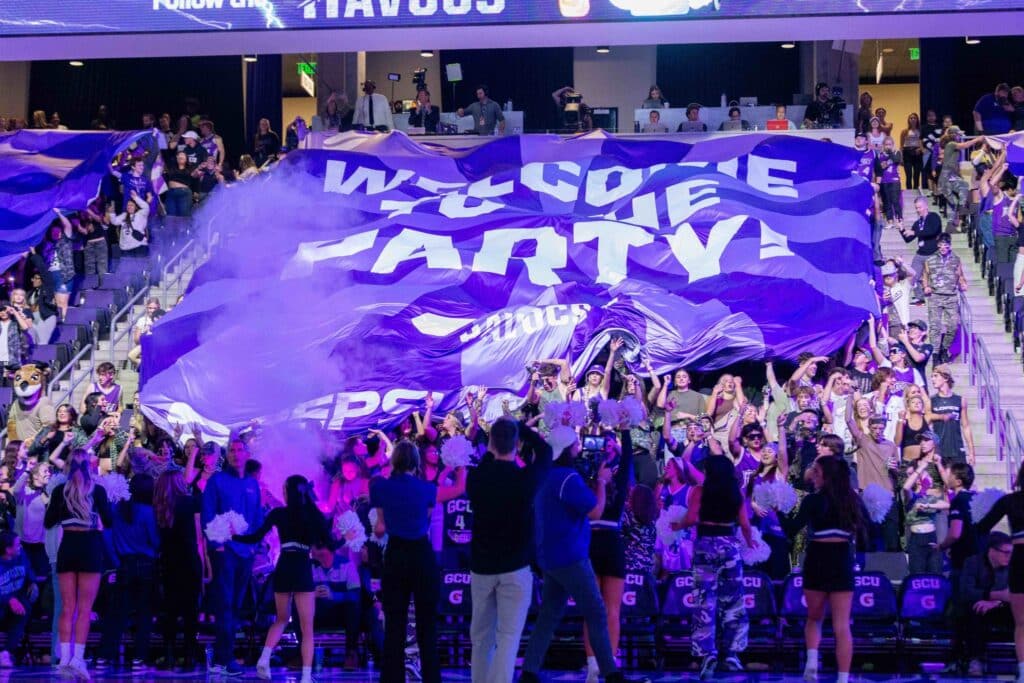It’s one thing for students to attend on game day, but it’s another for them to actively stand, cheer, and remain engaged throughout the entire event. Elite student sections are characterized by their 100% attendance, with students standing and actively participating for the entire duration of the game. No students sitting down on phones. No students leaving early. Most people assume that attendance and participation are tied to team performance or pre-existing culture, but the reality is that participation can easily be taught and improved through these basic strategies.
Playbook of Simple Cheers
Keep things simple. Student section cheers and chants are often too complicated and rhythmic. What works for a group of 100 students may not translate well to a crowd of 2,500. Establish a playbook of cheers designated for offensive and defensive possessions, as well as various situations during the game. The cheerleaders, dancers, band members and most importantly student section leaders should be well versed in the cheers and their timing.
Two Types of Cheering Systems
Since sound travels slower than light, often students in a neighboring section or in the top rows will hear the cheer or chant later than when it’s being yelled, causing a delay. This can cause the student section to be out of sync and make it sound chaotic.
Ideally, students are all chanting the same thing at the same thing, without speeding up or getting out of sync – whether it’s 100 students or 3,000. The key is to establish a cheering system. There are two primary cheering systems that are effective for helping increase the participation and unity of a student section.
1. Cheerleaders Starting Cheers
At the university level, cheerleaders are usually the most effective at leading cheers and chants. They are trained to call out cheers during game day. The standard practice should involve a cheer or chant for every possession, particularly during basketball games. It’s then the responsibility of the student section leaders to observe the cheer team, understand and hear the chant, and relay it to the student section. The band and dance team should also be trained to follow suit.
2. Student Section Leader Starting Cheers
Alternatively, at the high school level, it’s often more effective to have student section leaders initiate cheers or chants. This is because high school cheer teams tend to perform more complicated and rhythmic chants. In this scenario, student section leaders take the lead in starting cheers or chants. Ideally, other spirit groups like cheer, band, and dance should be trained to watch the student section leaders and join in.
Leader Placement
It’s common for most student section leaders to congregate in the front row, forming a cluster while facing the field or court. However, the most effective arrangement involves spreading them out in front of the student section and along the aisles within the section. Now students in the back rows can simply look to their right or left and follow the leader in the cheer or chant that is happening.
Leaders should be seen and easy to follow. They should project their voice toward the fan section and use large arm motions (remember, students can see things quicker than they can hear them). These strategies will help maximize participation, keep the student section from being quiet or rushing through cheers, and ultimately take the energy and hype to a whole new level on game day.






